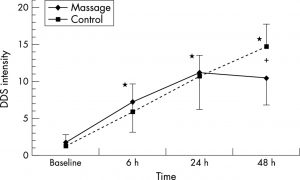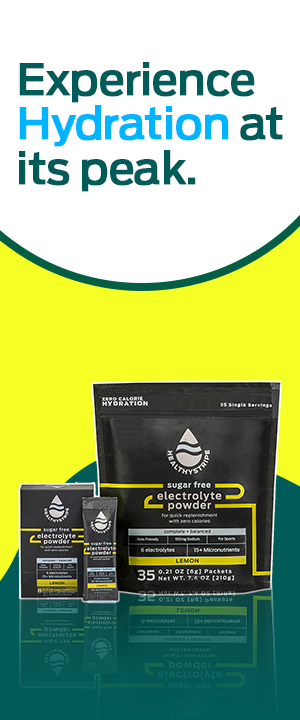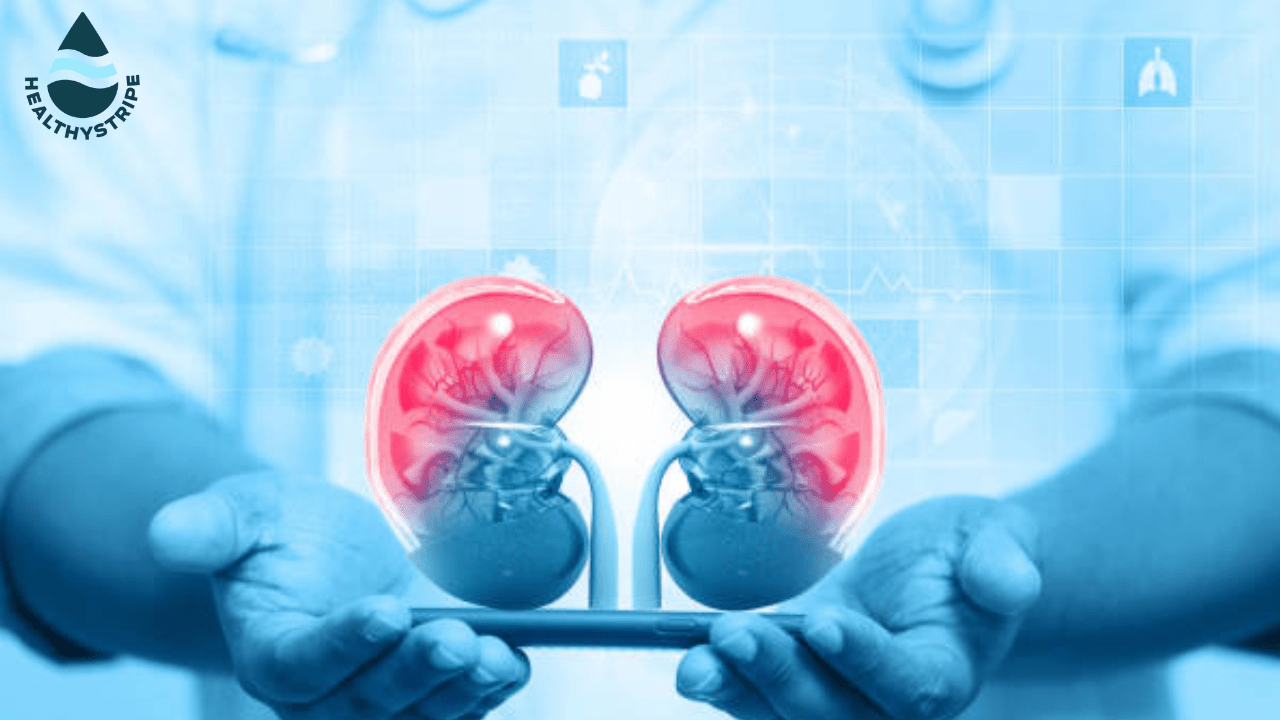Best Proven Ways to Prevent Muscle Soreness

Are your muscles sore after a workout? There might be a reason for that. Physical exercise is pivotal in promoting a well-rounded and vibrant lifestyle characterized by optimal health. Regular exercise yields substantial benefits, particularly in boosting cardiovascular and respiratory function and fortifying skeletal and muscular structures.
However, it is essential to acknowledge that exercise can induce muscle soreness, which is frequently encountered when embarking on novel exercise routines or intensifying existing ones. This discomfort can arise due to the recruitment of new muscle groups, muscular strain resulting from exertion, or the occurrence of tears in the fibers of the muscles.
These symptoms signify the muscle’s active response to the exercise’s new physical demands. This condition is known as delayed onset muscle soreness. This article will explain exactly what this condition is and how to prevent it.
What Is Delayed Onset Muscle Soreness (DOMS) And Its Causes?
Delayed onset muscle soreness (DOMS) refers to the muscle pain that occurs post-workout, typically starting one to two days after the exercise session. Unlike acute muscle soreness, experienced during or immediately after a workout, DOMS remains absent during the actual exercise.
Acute muscle soreness, on the other hand, is characterized by a burning sensation felt within the muscles during intense physical activity. This muscle soreness arises due to the rapid accumulation of metabolites during vigorous exercise and generally subsides immediately or shortly after the cessation of the workout.
The American College of Sports Medicine states that Delayed-Onset Muscle Soreness (DOMS) commonly manifests within 12 to 24 hours following a workout (1). The intensity of the pain typically reaches its peak around one to three days after the exercise, gradually subsiding after that.
Key symptoms associated with DOMS include:
- Tenderness in the muscles when touched
- Pain and stiffness that restrict the range of motion during movement
- Swelling in the affected muscles
- Muscle fatigue
- Temporary reduction in muscle strength
What Can Cause Delayed Onset Muscle Soreness?
Delayed-onset muscle soreness (DOMS) or muscle pain after a workout is primarily caused by the micro-tears in your muscle fibers due to high-intensity exercise. In response to these tears, your body initiates an inflammatory process, leading to the delayed onset of muscle soreness.
While various forms of high-intensity exercise can induce DOMS, one particular type called eccentric exercise is frequently associated with its occurrence (2). Eccentric exercises involve the simultaneous contraction and lengthening of a muscle.
For instance, when performing a bicep curl, the controlled downward movement while extending your forearm exemplifies an eccentric motion. Similarly, the tensing of your quadriceps while running downhill is another example of an eccentric movement. These exercises can make arm muscles sore after a workout.
Effective Ways To Relieve Sore Muscles
Time is the solution to treat Muscle Soreness, but you can also take measures to alleviate the pain and stiffness while awaiting your muscles’ recovery.
The existing research on this topic has produced varying results, indicating the necessity for further investigation. However, specific treatments and self-care practices have shown the potential to reduce the discomfort associated with DOMS.
- Massage
According to a review conducted in 2017, multiple studies demonstrated that individuals who received a massage within 24, 48, or 72 hours after an intense workout experienced considerably less soreness than those who did not receive a post-workout massage (3). Among the time intervals, getting a massage 48 hours after the workout was the most effective.
While receiving a massage after every workout may not be practical, you can consider performing self-massage on specific areas such as your calves, thighs, buttocks, arms, and shoulders. To massage your muscles, apply a small amount of oil or lotion to the targeted area and knead, squeeze, and gently shake your muscles.
Another technique that may help prevent severe DOMS is using a foam roller immediately after a workout. This can assist in alleviating the symptoms associated with DOMS.

Source: https://bjsm.bmj.com/content/bjsports/37/1/72/F1.large.jpg
- Topical Analgesics
Topical analgesics are specifically designed to provide muscle soreness after workout relief. Certain topical analgesics, such as those containing menthol or arnica, have shown positive results in alleviating the discomfort associated with DOMS. These products are applied directly to the affected area and should be used according to the instructions provided on the packaging regarding the recommended amount and frequency of application.
- Baths
Based on a review of studies conducted in 2016, it was discovered that immersing the entire body in a cold water bath (ranging from 50–59°F or 10–15°C) for 10 to 15 minutes can help reduce the severity of DOMS (4).
Cold baths have gained popularity as a self-treatment method to prevent muscle soreness after a workout among competitive athletes.
If ice bathing seems too extreme, try soaking in a warm tub instead. Alternatively, using moist heat wraps or a warm bath may also be effective in alleviating the pain and stiffness associated with DOMS.
- Anti-Inflammatory Foods
While further research is required, preliminary findings indicate that incorporating specific foods or supplements into your diet may assist in alleviating DOMS (5).
How To Prevent Muscle Soreness After Working Out?
To prevent Delayed Onset Muscle Soreness (DOMS), it is crucial to adopt a gradual approach when starting a new workout program. Allowing sufficient time for the muscles to adapt to the increased stress can help minimize the severity of symptoms, although complete avoidance of soreness may not be possible. Providing ample muscle recovery time after engaging in activities that cause soreness is also essential. It is advisable to be cautious when repeating the same exercises on consecutive days.
While a proper warm-up is essential for preparing the muscles for potential strain, limited evidence supports its effectiveness in preventing DOMS symptoms. Stretching is sometimes performed before exercise, but stretching after the body is warmed up, and post-workout is more beneficial. However, it’s worth noting that stretching has not been proven to reduce or prevent DOMS symptoms. However, Delayed Onset Muscle Soreness (DOMS) generally diminishes in a matter of days, typically lasting around 3-5 days. During this time, the affected muscles adapt and become better equipped for future workouts that are similar.
Sore muscles are an inevitable part of becoming stronger and healthier, and there are ways to alleviate the discomfort.
1. Warm Up
Research suggests that warming up your muscles before exercising is more beneficial than simply stretching them. By engaging in light versions of specific exercises such as slow jogging, biking, jumping rope, or lifting light weights, you can increase blood flow to your muscles, waking them up and preparing them for the workout.
2. Hydrate
Drinking adequate water is essential for controlling your body temperature, loosening your joints, and facilitating the transportation of nutrients to generate energy. Depriving your body of water can lead to muscle cramps, fatigue, dizziness, or even more severe symptoms. Therefore, hydrate adequately before, during, and after your workouts.
3. Optimal Rest
Give your muscles approximately 48 hours before targeting the same muscle groups with the same intensity or duration. Engaging in limited or lighter exercise for the same muscle groups can be beneficial. For instance, if you experience soreness after a running session, opt for a light walk or bike ride on the following days. Avoid complete rest and immobilization, as it may impede the recovery process.
4. Correct Technique
Proper exercise form is crucial for safeguarding your muscles against strain and injury. If you have access to a gym or health club, seek assistance from a trainer or instructor who can guide you on how to lift weights and utilize machines and equipment.
5. Cool Down
After your workout, it is essential to engage in stretching exercises. Your muscles are more relaxed and flexible when they are warm. Stretching also aids blood circulation away from your muscles and back to your heart, facilitating recovery.
6. Respect Your Limits
While pushing yourself beyond your capabilities may be tempting, gradually progressing with your exercise routine is vital. Over time, you can gradually increase the weight you lift or the duration of your runs. Attempting to advance slowly may result in injuries, so it is essential to be mindful of your body’s limits and progress sustainably.
Should I Exercise If I Feel Sore?
In some cases, symptoms of discomfort tend to reduce during physical activity but resurface after the body has had a chance to recover. Engaging in exercise while experiencing severe symptoms can exacerbate the situation. However, engaging in light activity should help your recovery process. It is important to note that limited evidence suggests that light activity can accelerate recovery.
If your symptoms significantly impede your ability to perform the activity or if it causes excessive pain, it is advisable to refrain from the activity for a few days. Once your symptoms start to subside, you can gradually resume the activity.
Also read: Muscle Cramps: Symptoms, Causes, Diagnosis and Treatments
When To See A Doctor?
Are your muscles sore after the first workout? Well, it does not usually require medical intervention. DOMS is a normal physiological response to exercise and typically resolves on its own within a few days. However, there are certain circumstances where seeking medical treatment is advisable.
Suppose the pain level caused by DOMS becomes severe and debilitating, to the point where it usually significantly affects your daily activities or prevents you from moving. In that case, it is recommended to consult with a healthcare professional. They can assess your condition, provide appropriate guidance, and potentially offer pain management strategies or treatments to alleviate your discomfort.
Additionally, if you notice any abnormal swelling or inflammation in the affected muscles, such as a significant increase in size, redness, or warmth, it is essential to seek medical attention. These symptoms could indicate a more serious underlying condition or injury that requires evaluation and treatment.
Furthermore, if you observe dark-colored urine, it is crucial to consult a medical professional promptly. Dark urine can signify rhabdomyolysis, a rare but potentially severe condition where muscle breakdown releases harmful substances into the bloodstream. Rhabdomyolysis may result in kidney damage or other complications, and immediate medical intervention is necessary.
Conclusion
Having muscles extremely sore after a workout is a common condition that affects many people who go through rigorous exercise schedules. By implementing these strategies and understanding your body’s responses, you can effectively manage and mitigate the impact of muscle soreness, allowing for a more enjoyable and sustainable exercise routine. Remember that discomfort is expected; your health and well-being should always be prioritized.
How long does muscle soreness last?
Do sore muscles mean growth?
Sore muscles are not necessarily an indicator of muscle growth. While muscle soreness can occur due to intense exercise, it primarily signifies muscle damage and the subsequent repair process. Muscle growth, also known as hypertrophy, is influenced by various factors such as progressive overload, proper nutrition, and adequate recovery. So, while soreness can be a byproduct of muscle growth, it is not a direct measure.
Are you burning calories when muscles are sore?
Muscles require energy to repair and recover, so there is a metabolic cost associated with the healing process. While it’s difficult to quantify the exact number of calories burned during muscle recovery, it is generally accepted that the body expends additional energy during this time. However, the calorie burn needs to be more significant to significantly impact overall weight loss or calorie expenditure compared to regular exercise.
Should I skip the workout if I am sore?
Whether to skip a workout or not when experiencing muscle soreness depends on the severity and overall fitness level. Mild to moderate soreness is manageable and can be alleviated through light exercise and stretching. Engaging in light activity helps promote blood flow and aid in the recovery process. However, additional rest and recovery may be beneficial before resuming intense exercise if the soreness is severe and affects your range of motion or daily functioning.
How long does it take to build muscle?
The time it takes to build muscle varies from person to person and depends on several factors, including genetics, diet, training intensity, and consistency. Generally, muscle gains can be observed within a few months of regular resistance training. However, significant muscle growth and strength development often occur over a more extended period, ranging from several months to years, depending on individual factors and goals.
Is it okay to work out when muscles are sore?
Engaging in exercise when experiencing muscle soreness is generally safe and beneficial. Light to moderate-intensity exercises, such as low-impact cardio or gentle stretching, can help increase muscle blood flow, promote recovery, and alleviate soreness. However, it’s essential to listen to your body and avoid overexertion. Suppose the soreness is severe or affects your ability to perform exercises correctly. In that case, it may be best to give the muscles additional time to recover before engaging in intense workouts.









